ศาลาธรรมาสน์สิงห์ วัดศรีนวลแสงสว่างอารมณ์
ศาลาธรรมาสน์สิงห์ วัดศรีนวลแสงสว่างอารมณ์
ที่ตั้ง วัดศรีนวลแสงสว่างอารมณ์ บ้านชีทวน ตำบลชีทวน อำเภอเขื่องใน จังหวัดอุบลราชธานี
สถาปนิก/ผู้ออกแบบ ช่างชาวเวียดนาม ชื่อ นายเวียง และพระอุปัชฌาวงศ์ พรหมสโร
ผู้ครอบครอง วัดศรีนวลแสงสว่างอารมณ์
ปีที่สร้าง พ.ศ. 2468 – 2470
ประวัติ
วัดศรีนวลแสงสว่างอารมณ์ แต่เดิมใช้เขียนว่า วัดสีนวน ไม่ปรากฏหลักฐานชัดเจนว่าสร้างขึ้นเมื่อใด โดยมีเรื่องเล่าว่า ญาครูตีนก้อมได้พาญาติโยมสร้างวัดขึ้นโดยมียายสีนวนได้บริจาคที่ดินให้สร้างวัด ต่อมาระหว่างปี พ.ศ. 2468 – 2470 พระอุปัชฌาวงศ์ พรหมสโร เจ้าอาวาสวัดในขณะนั้นได้มีการสร้างสิม (โบสถ์) และศาลาการเปรียญที่ภายในมีธรรมาสน์สิงห์เทินบุษบก ซึ่งเป็นที่แปลกตาและแตกต่างจากธรรมมาสน์โดยทั่วไปมาก โดยมีผู้ออกแบบและดำเนินการก่อสร้างเป็นช่างชาวเวียดนาม (ญวน) ชื่อ นายเวียง ส่วนการตกแต่งภายนอก ภายใน และรายละเอียดต่างๆ ท่านอุปัชฌาวงศ์เป็นผู้ออกแบบและตกแต่ง หลังจากที่มีการใช้สอยศาลาการเปรียญ และธรรมาสน์สิงห์เทินมาเป็นระยะเวลายาวนาน ส่งผลให้ส่วนประกอบทางสถาปัตยกรรมและการตกแต่งบางส่วนอยู่ในสภาพทรุดโทรด จนกระทั่งในปี พ.ศ. 2539 สำนักงานโบราณคดีและพิพิธภัณฑสถานแห่งชาติที่ 8 อุบลราชธานี ได้ดำเนินการบูรณซ่อมแซมธรรมาสน์สิงห์เทินบุษบกและจิตกรรมฝ้าเพดานของศาลาการเปรียญโดยได้รับงบประมาณสนับสนุนจากกรมศิลปากรและเงินบริจาคจากชาวบ้านชีทวน ต่อมาในปี พ.ศ. 2540 กรมศิลปากรได้ประกาศขึ้นทะเบียนศาลาธรรมาสน์สิงห์เป็นโบราณสถานชองชาติ และในปี พ.ศ. 2541 กรมศิลปากรได้สนับสนุนงบประมาณเพื่อบูรณะตัวอาคารศาลาธรรมาสน์สิงห์ โดยมีนายเสนาะ จิณะสิทธิ์ นายช่างศิลปกรรม สำนักงานโบราณคดีและพิพิธภัณฑสถานแห่งชาติที่ 8 อุบลราชธานี เป็นผู้ควบคุมการบูรณะซ่อมแซม
ศาลาธรรมาสน์สิงห์ วัดศรีนวลแสงสว่างอารมณ์ เป็นอาคารไม้ทรงไทยชั้นเดียวยกพื้น มีบันไดขึ้นทางทิศเหนือ ผังพื้นอาคารเป็นรูปสี่เหลี่ยมผืนผ้า แกนอาคารทางยาวอยู่ในแนวตะวันออกเฉียงเหนือ-ตะวันตกเฉียงใต้ หลังคามี 2 ชั้น ชั้นล่างเป็นหลังคาปีกนกโดยรอบ ชั้นบนเป็นหลังคาจั่ว ทั้งหมดมุงด้วยสังกะสี โดยสมัยก่อนมุงด้วยไม้ (แป้นเกล็ด) ศาลามีหน้าจั่ว 2 ด้านทำด้วยไม้ ส่วนล่างของจั่วทำเป็นลูกบัว ส่วนบนหน้าจั่วด้านทิศเหนือมีไม้แกะสลักเป็นพระพุทธรูปนั่งประทับช้างสามเศียร ส่วนบนหน้าจั่วด้านทิศใต้เป็นพุทธรูปแกะสลักยืนบนมารแบกใบระกาเป็นหัวนาค ช่อฟ้าเป็นไม้แกะสลักไว้บนจั่ว ตัวอาคารเปิดโล่ง 3 ด้าน เสาของอาคารทั้งหมดเป็นเสาไม้ 12 เหลี่ยม บนฝ้าเพดานและคอสองมีภาพเขียนสีซึ่งเป็นการเขียนลายสีที่สวยงาม ลักษณะของจิตรกรรมเป็นจิตกรรมที่ใช้เทคนิคสีฝุ่นเขียนบนพื้นไม้ประดับอยู่ฝ้าเพดานและคอสองของศาลาการเปรียญ โดยแบ่งออกเป็น 4 ห้องแต่ละห้องเขียนลวดลายและเรื่องราวต่างๆประกอบด้วย
ห้องที่ 1 เขียนภาพดวงดาราขนาดใหญ่อยู่ตรงกลาง มีนาคพันอยู่โดยรอบส่วนพื้นที่ด้านข้างเหลือทั้งสองด้านเขียนเป็นรูปบุคคลอยู่ในท่าทางการดันวงล้อหรือวงกลมโดยมีรูปหัวมังกรพ่นลายพฤกษาประกอบอยู่ด้วย
ห้องที่ 2 เขียนบนฝ้าเพดานรูปราหูลายดอกไม้ ใบไม้และรูปสัตว์ ส่วนฝ้าสังกะสีมีรูปลายดวงดาราที่มีภาพบุคคล ต้นไม้หรือสัตว์ประกอบ รูปเสือกินคน รูปสัตว์ต่างๆ อาทิ ม้า กระต่าย เต่า เป็นต้น
ห้องที่ 3 มีรูปดวงดาราขนาดใหญ่อยู่ตรงกลางล้อมรอบด้วยรูปเด็กมีปีกคล้ายกามเทพเกี่ยวพันกันเป็นวงกลม บริเวณข้างของดวงดาราเขียนเป็นรูปพญานาค 2 ตัว พันรัดบุคคลอยู่ ซึ่งพญานาคพ่นออกมาเป็นลายดอกไม้ ใบไม้ มีรูปเต่าและม้ามังกรอีกข้างมีรูปบุคคลนั่งอยู่บนพญานาค 2 ตัว และยังมีรูปหงส์ประกอบด้วย
ห้องที่ 4 เขียนรูปดวงดาราขนาดใหญ่อยู่ตรงกลางมีรูปนางฟ้าหรือเทพธิดากำลังฟ้อนรำลักษณะหน้าตาเป็นสาวเวียดนามนั่งอยู่บนหงส์ซึ่งลักษณะของตัวหงส์เป็นแบบจีนผสมอิทธิพลศิลปะญวน ส่วนด้านข้างเป็นรูปเทพและยักษ์อยู่ในลักษณะต่อสู้กัน
ปัจจุบัน ศาลาธรรมาสน์สิงห์ วัดศรีนวลแสงสว่างอารมณ์ ยังคงใช้เป็นที่ปฏิบัติศาสนกิจ อาทิ งานเทศน์มหาชาติ และงานพิธีสำคัญทางศาสนา เป็นแหล่งเรียนรู้ทางวัฒนธรรมในรูปแบบสถาปัตยกรรมให้แก่นักเรียน นักศึกษา และนักท่องเที่ยว ซึ่งนับว่าเป็นหลักฐานสำคัญที่สะท้อนให้เห็นว่าชาวเวียดนาม (ญวน) ได้เข้ามาอาศัยและมีบทบาททางศิลปะในช่วงดังกล่าว
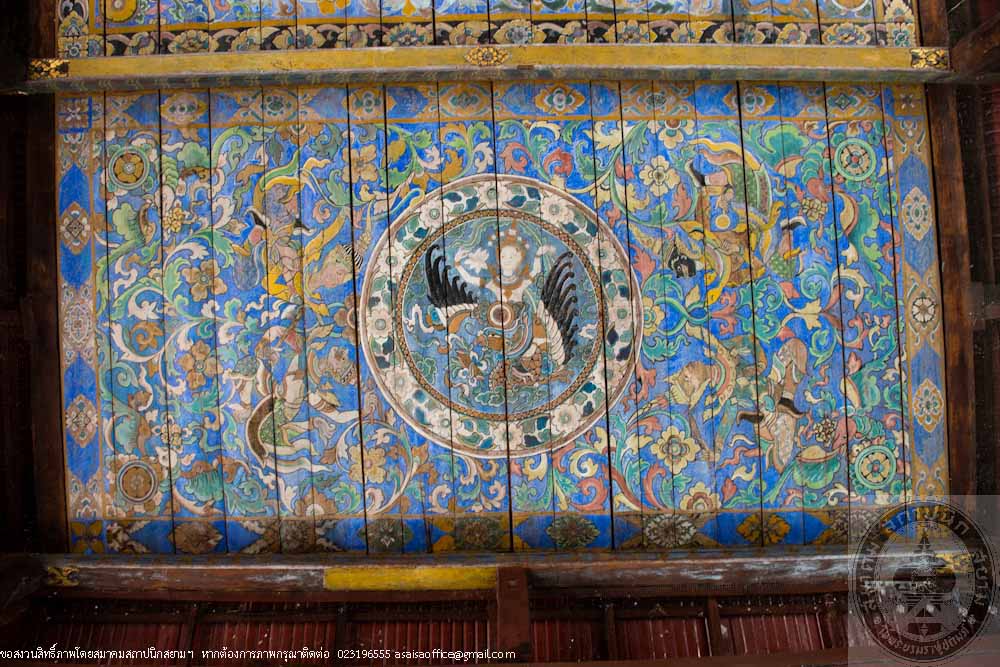
ศาลาธรรมาสน์สิงห์

ศาลาธรรมาสน์สิงห์
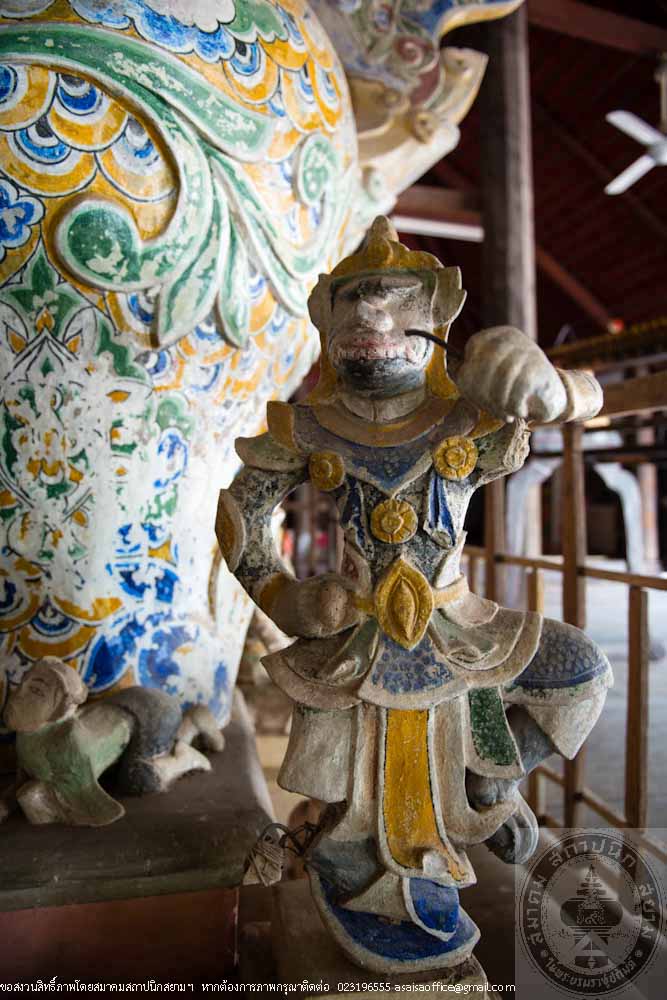
ศาลาธรรมาสน์สิงห์
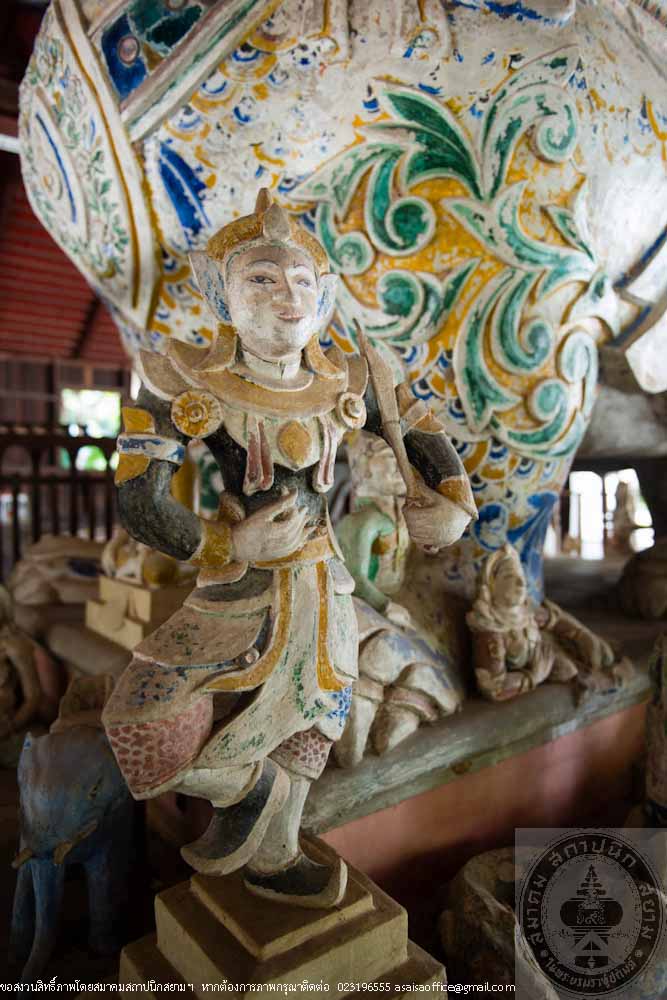
ศาลาธรรมาสน์สิงห์

ศาลาธรรมาสน์สิงห์
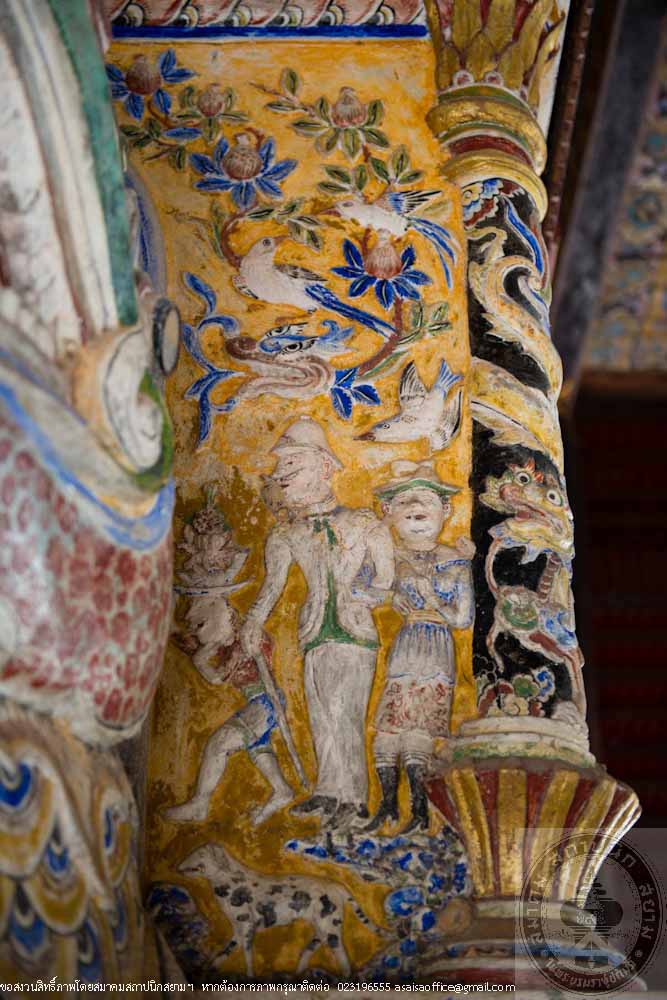
ศาลาธรรมาสน์สิงห์
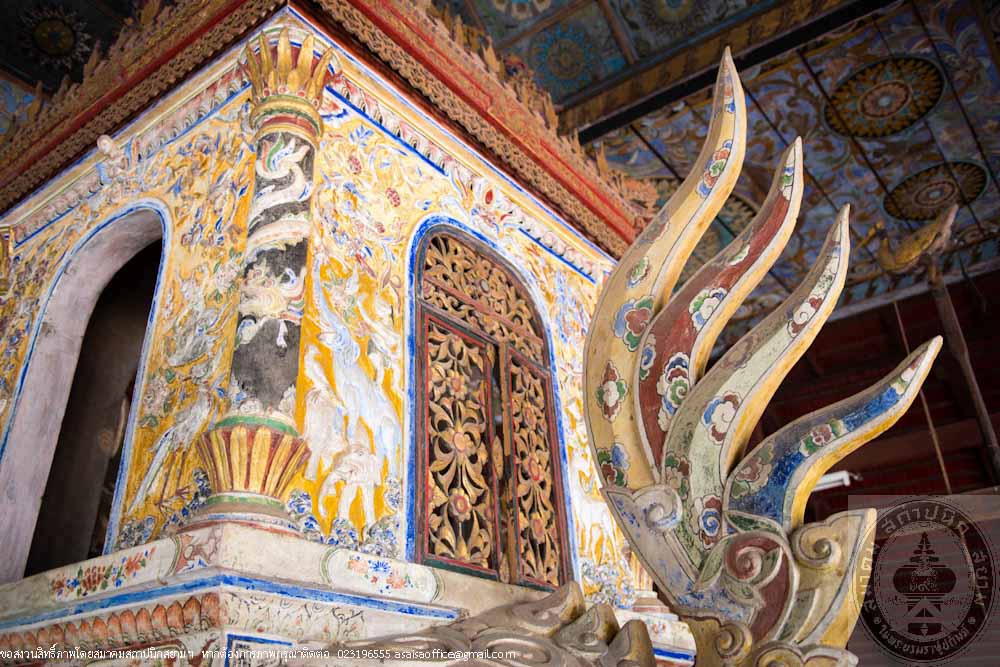
ศาลาธรรมาสน์สิงห์
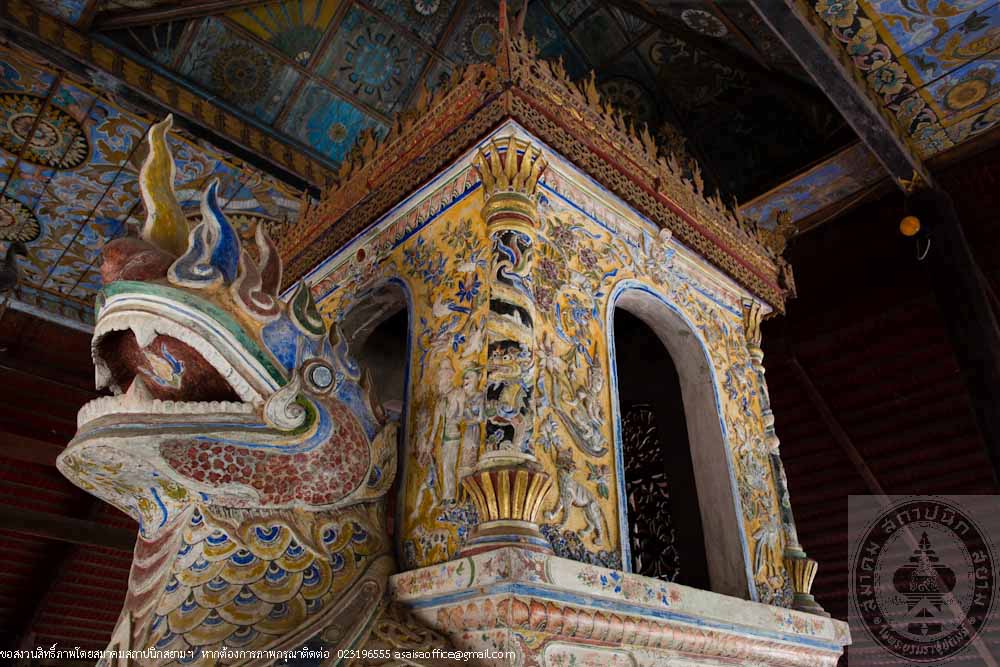
ศาลาธรรมาสน์สิงห์
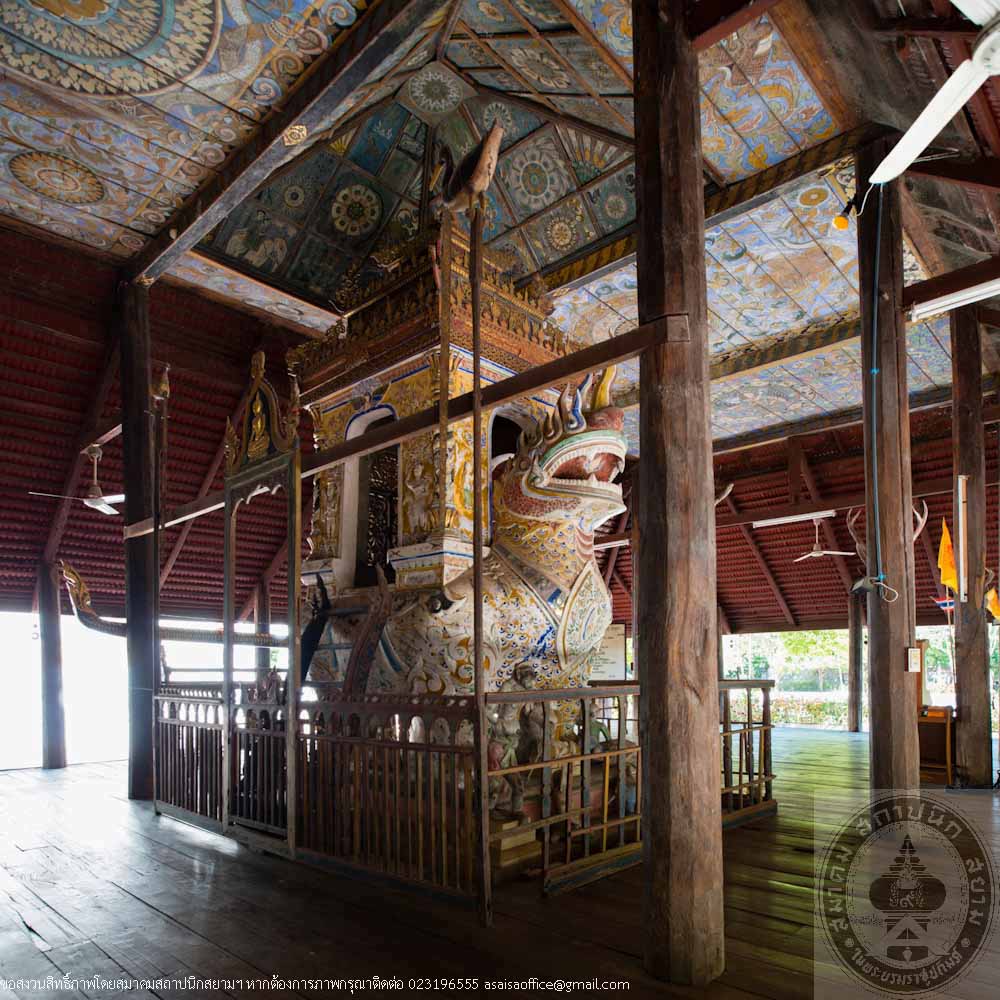
ศาลาธรรมาสน์สิงห์
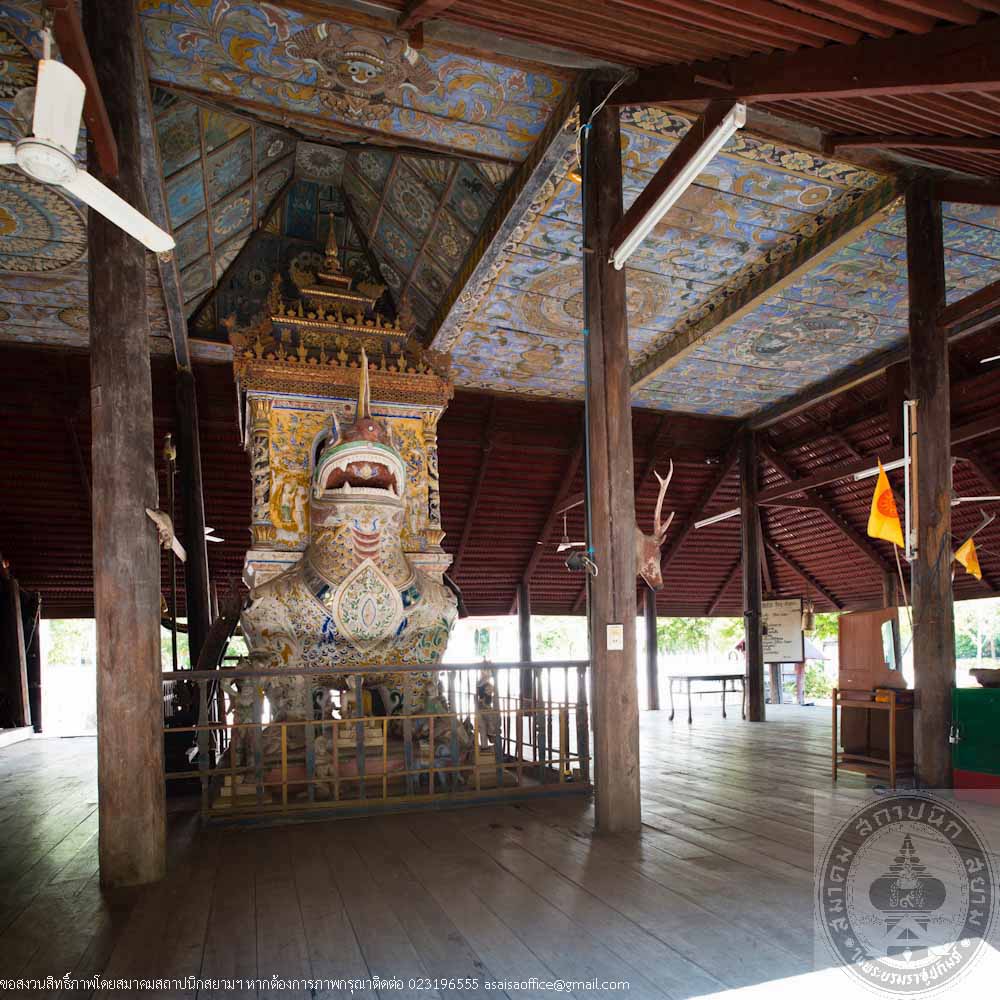
ศาลาธรรมาสน์สิงห์
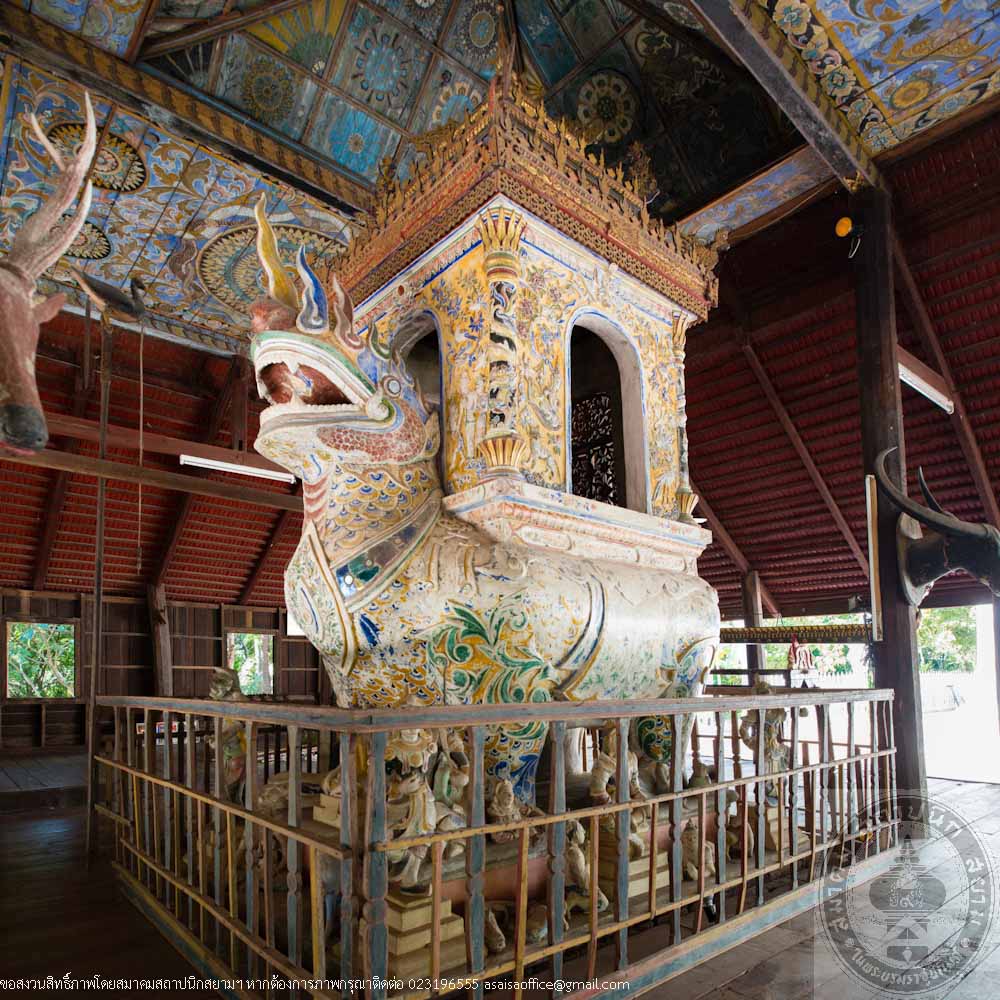
ศาลาธรรมาสน์สิงห์

ศาลาธรรมาสน์สิงห์

ศาลาธรรมาสน์สิงห์

ศาลาธรรมาสน์สิงห์
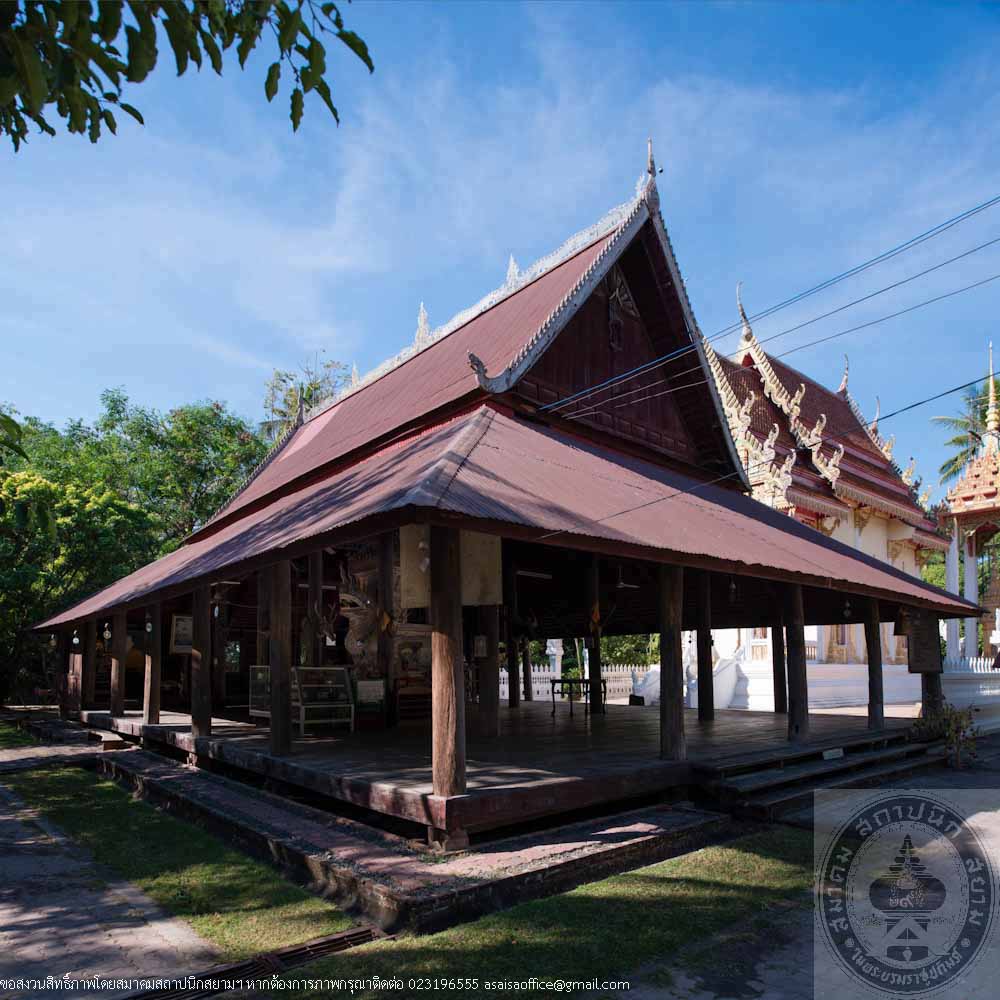
ศาลาธรรมาสน์สิงห์
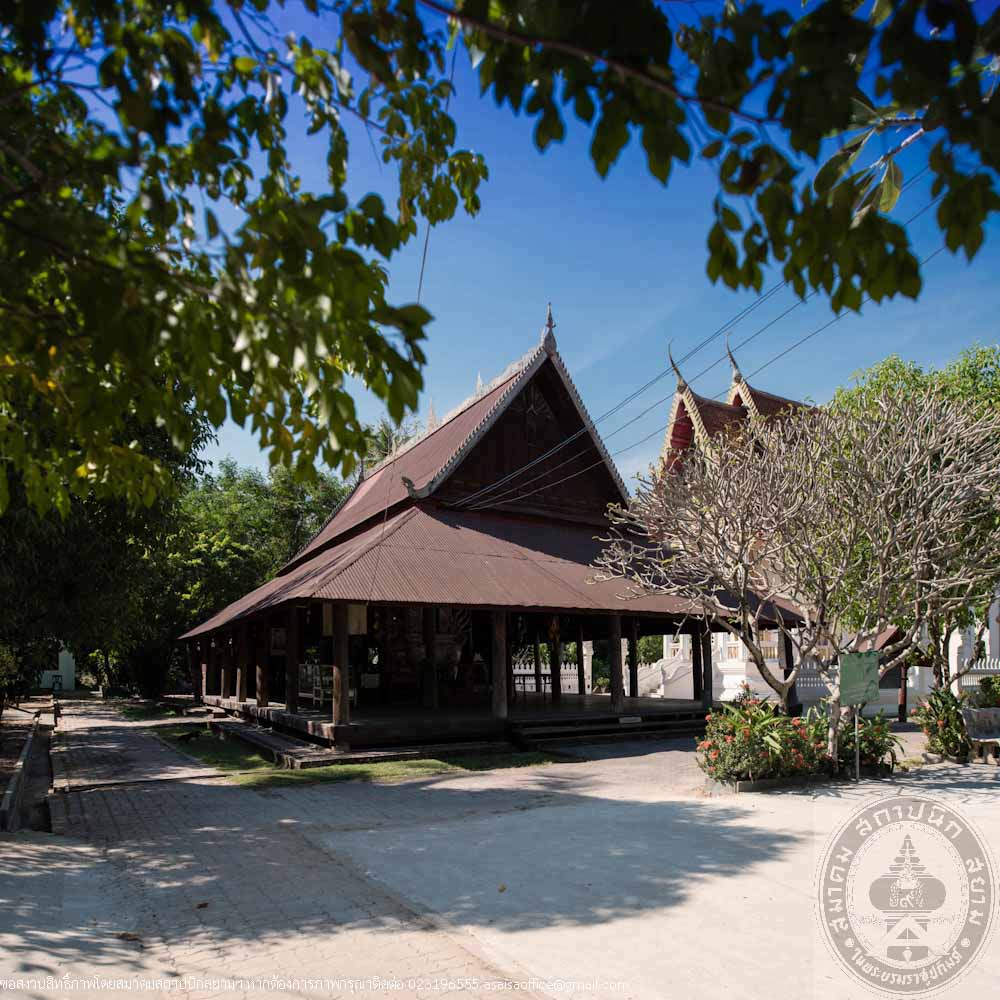
ศาลาธรรมาสน์สิงห์
-

ศาลาธรรมาสน์สิงห์
-

ศาลาธรรมาสน์สิงห์
-

ศาลาธรรมาสน์สิงห์
-

ศาลาธรรมาสน์สิงห์
-

ศาลาธรรมาสน์สิงห์
-

ศาลาธรรมาสน์สิงห์
-

ศาลาธรรมาสน์สิงห์
-

ศาลาธรรมาสน์สิงห์
-

ศาลาธรรมาสน์สิงห์
-

ศาลาธรรมาสน์สิงห์
-

ศาลาธรรมาสน์สิงห์
-

ศาลาธรรมาสน์สิงห์
-

ศาลาธรรมาสน์สิงห์
-

ศาลาธรรมาสน์สิงห์
-

ศาลาธรรมาสน์สิงห์
-

ศาลาธรรมาสน์สิงห์
Thammas Singha Sermon Hall of Wat Sinuan Sangsawangarom
Location Wat Sinuan Sangsawangarom, Ban Cheetuan, Tambon Cheetuan, Kuang Nai, Ubon Ratchathani
Architect/ Designer A Vietnamese technician named Vieng and Preceptor Wong Promsaro
Owner Wat Sinuan Sangsawangarom
Year built 1925-1927
History
Wat Sinuan Sangsawangarom, formerly known as Wat Sinuan. There was no clear evidence as to when the temple was built; however, there was a tale about Ya Khru Teen Kom who built the temple on a piece of land donated by an elder woman named Sinuan. Later during the year 1925 – 1927, Preceptor Wong Promsaro, Abbot of the temple at the time, had built Sim (chapel) and sermon hall that house a pulpit of Singha figure carrying a throne which is very outstanding and uniquely different from the other pulpits in general. It was designed and constructed by a Vietnamese technician named Vieng. The décor of the temple’s interior and exterior as well as other decoration details were designed and decorated by Preceptor Wong. After an extended use of the sermon hall and the Singha pulpit, architectural elements and several décor ornaments fell into disrepair. In 1996, The Office of the Archaeology and National Museum 8 of Ubon Ratchathani jointly renovated the pulpit and the murals on the ceiling inside the sermon hall with the budget funded by the Fine Arts Department and money donated by Cheetuan folk. In 1997 the Fine Arts Department announced the register of the sermon hall where the pulpit is located as national archaeological site. In 1998, the Fine Arts Department approved a renovation budget for the sermon hall with Sanor Jinasit, an art technician from The Office of the Archaeology and National Museum 8 as the director of the renovation project.
The sermon hall of Wat Sinuan Sangsawangarom is a single platform Thai style pavilion with entrance stairs on the north side. Rectangular floor plan with the length on the northeast-Southwest axis. Double roof, wing of a bird roof under and gable on top, all are covered with corrugated iron. It was previously covered with wood (shingles.) Two pediments on both side of the hall are wood, with friezes underneath. The northern pediment is decorated with wood carving of a Buddha sitting on a three headed elephant. The southern pediment is a wood carving of a Buddha standing on a demon with Bai Raka in a shape of a naga’s head and wood carved Cho Fah on top of the gable. Three sides of the hall are open with wood dodecagonal pillars. Beautiful murals on ceiling and the supporting posts using powered color technique and divided into 4 rooms and the painting in each room depict different stories. The first room features a big star in the center with Naga coiling around it. The space on the side display a painting of an individual pushing a wheel or a circle with a dragon head spitting out floral patterns. The second room is a painting of Rahu, flowers, leaves and animals while the iron tiles consists of star patterns with an image of an individual, trees or animals, a painting of a tiger eating a man and other animals such as horses, rabbits and turtles. The third room features a big star in the center surrounded by little children with wings similar to cupid. The space on the side contains paintings of two Nagas coiling a person and spitting out floral patterns, leaves, turtles and dragon horse. On the other side are pictures of people sitting on two Nagas as well as the swan. The fourth room feature paintings of a big star in the center with dancing fairies or angels that resemble Vietnamese ladies on the Chinese-Viet swan. On the side is a picture of a deity and giant fighting.
Today, the sermon hall of Wat Sinuan Sangsawangarom is still being used in religious ceremonies such as the Mahachati Sermon and other important ceremonies. It also became a cultural learning center of architecture for students and tourists. A very important piece of evidence that show the settlement and involvement of the Vietnamese (Yuan) in arts at that period of time.